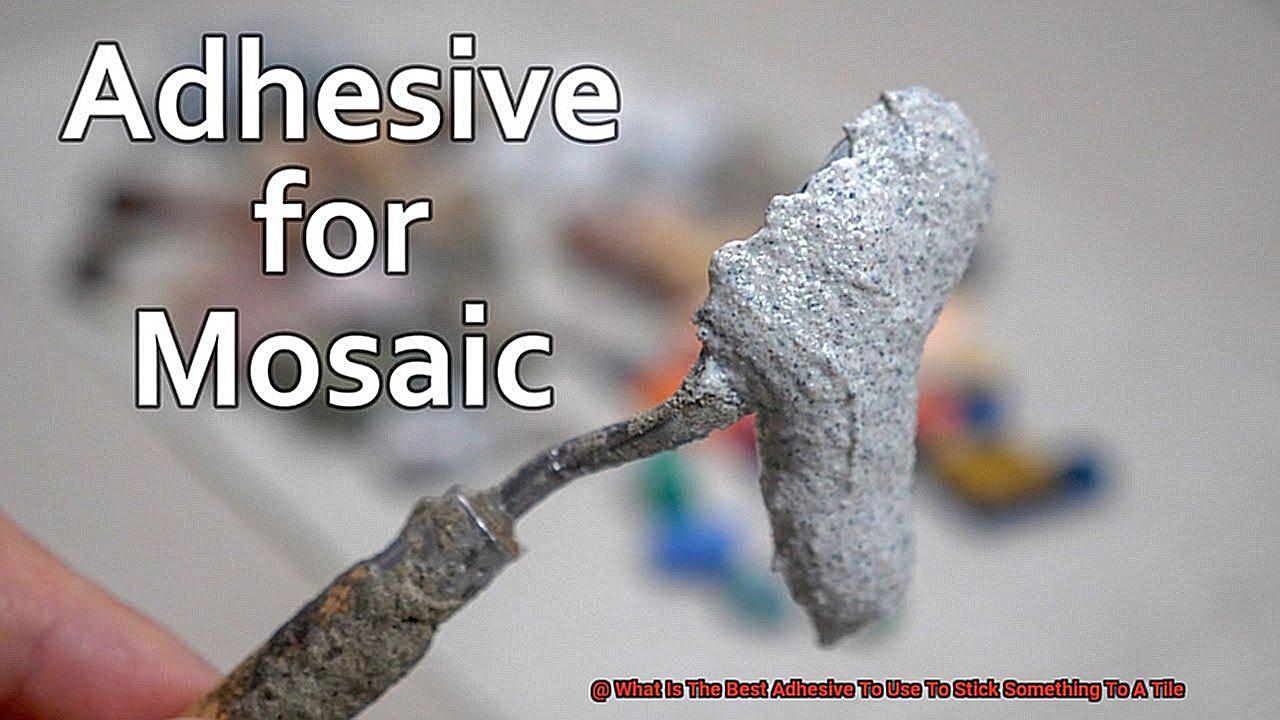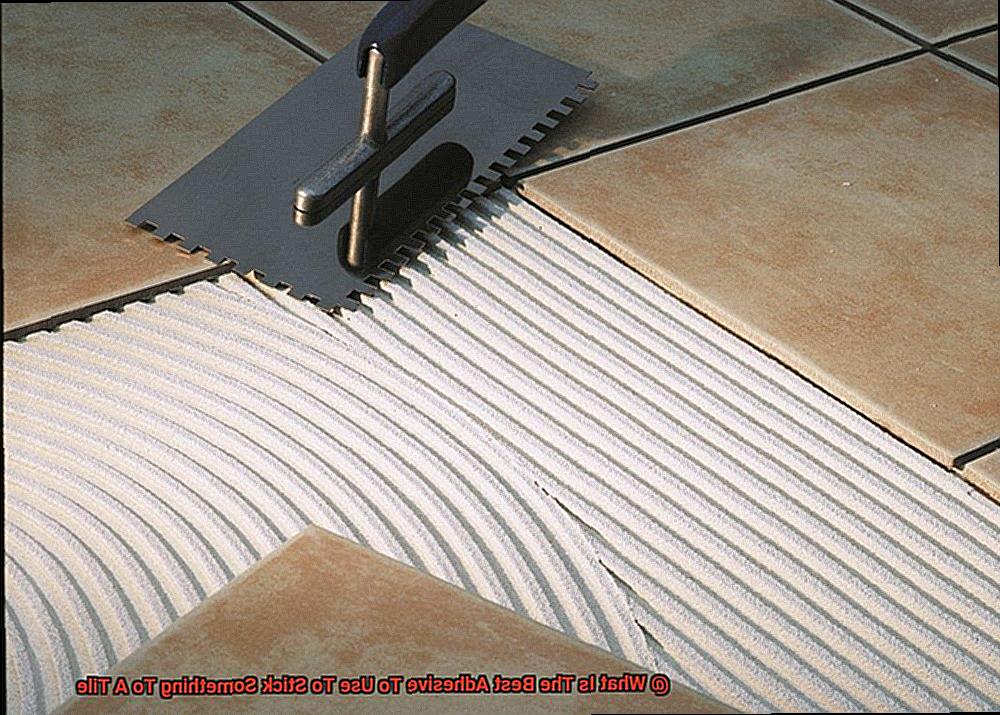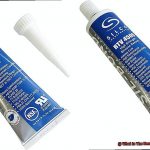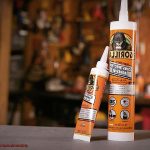Ever found yourself in a sticky situation, desperately seeking the best adhesive to stick something onto a tile? Whether you’re fixing a broken tile or adding some pizzazz to your bathroom, choosing the right adhesive is crucial.
In this blog post, we’ll dive headfirst into the world of adhesives and uncover the ultimate champion for bonding with tiles. From stubborn shower shelves to tricky wall decorations, we’ll find an adhesive that sticks like nobody’s business.
While there are countless options out there, one adhesive reigns supreme when it comes to tile application – epoxy resin. Known for its unbeatable bonding capabilities and endless versatility, epoxy resin has become the go-to choice for DIY enthusiasts and professionals alike. So stick around as we explore its perks, potential drawbacks, and how to make the most of this extraordinary adhesive.
Ready to discover the secrets of finding the perfect adhesive for sticking something to a tile surface? Let’s dive in and ensure your projects stick flawlessly.
Types of Tiles and Their Adhesive Requirements
Contents
- 1 Types of Tiles and Their Adhesive Requirements
- 2 Adhesives for Ceramic Tiles
- 3 Adhesives for Glass and Porcelain Tiles
- 4 Specialty Adhesives for Specific Requirements
- 5 Surface Preparation Before Applying Adhesive
- 6 Permanent vs Temporary Bonding Options
- 7 Heat-Resistant Epoxy as an Option
- 8 The Benefits of Using the Right Adhesive
- 9 Conclusion
Tiles are a versatile and stylish choice for any space, whether it’s a kitchen backsplash, a bathroom floor, or a decorative mosaic design. However, it is important to choose the right adhesive for each type of tile to ensure a secure and long-lasting bond. In this article, we will explore the various types of tiles and their specific adhesive requirements to help you make informed decisions for your next tile project.
Ceramic Tiles:
Ceramic tiles are a popular option due to their durability and versatility. These tiles can be used on both walls and floors. For ceramic tiles, a cement-based adhesive known as thin-set mortar is typically recommended.
Thin-set mortar provides excellent adhesion and ensures a strong bond between the tile and the surface.
Porcelain Tiles:
Porcelain tiles are highly resistant to water, making them ideal for areas prone to moisture, such as bathrooms and kitchens. These tiles require a modified thin-set mortar adhesive that can withstand high stress and moisture levels. This adhesive has enhanced bonding properties specifically designed for porcelain tiles.
Natural Stone Tiles:
Natural stone tiles, such as marble, granite, slate, and travertine, add a touch of elegance to any space. However, due to their unique characteristics, they require a specialized adhesive.
Epoxy-based adhesives are commonly used for natural stone tiles as they offer excellent bond strength and flexibility. These adhesives also prevent staining or discoloration on the surface of the natural stone.
Glass Tiles:
Glass tiles have gained popularity for their unique appearance and light-reflecting properties. To preserve their translucent nature, clear or white silicone-based adhesives are recommended.
These adhesives provide excellent adhesion while allowing flexibility for movement. They also ensure that no color distortion occurs on the glass surface.
Mosaic Tiles:
Mosaic tiles are small pieces arranged in intricate patterns or designs. Whether made from ceramic, glass, or natural stone, mosaic tiles require a thin-set adhesive specifically formulated for mosaic installations. This adhesive ensures easy and precise placement of the mosaic tiles. It provides a strong bond while allowing for necessary adjustments during installation.
Conclusion:
Choosing the right adhesive for your tile project is crucial for ensuring a secure and long-lasting bond. By understanding the characteristics of different tile types and their adhesive requirements, you can make informed decisions that will result in a beautiful and functional space. Remember to consult the manufacturer’s recommendations and follow proper surface preparation instructions to achieve the best results.
Adhesives for Ceramic Tiles
Tiles are like puzzle pieces that transform a space into a work of art. But to ensure their longevity, you need the right adhesive to keep them firmly in place. In this guide, we’ll explore the different types of adhesives for ceramic tiles, their advantages and disadvantages, and how to choose the perfect one for your project. Let’s dive in.
Cement-Based Adhesive:
Made from a mixture of cement, sand, and additives, cement-based adhesives are the most commonly used for ceramic tiles. They offer excellent bond strength, resistance to moisture and temperature changes, and can be used both indoors and outdoors. However, they have a longer curing time compared to other adhesives.
Epoxy-Based Adhesive:
Known for their high bond strength and chemical resistance, epoxy-based adhesives are ideal for areas exposed to water or heavy foot traffic. They come in two parts (resin and hardener) that need to be mixed together before application. However, they have a limited working time before hardening.
Acrylic-Based Adhesive:
Acrylic-based adhesives are water-based adhesives with good bond strength. They are easy to use and have a quick drying time. However, they may not be suitable for areas with high moisture content.
Polyurethane Adhesive:
Polyurethane adhesives provide strong bonds on various surfaces and are resistant to moisture. They are also flexible and suitable for uneven substrates. However, they have a longer curing time and may require primer application.
Choosing the Right Adhesive:
Consider the tile type, surface conditions, and environmental factors when choosing an adhesive. For high-moisture areas like bathrooms and kitchens, opt for waterproof adhesives. Always follow the manufacturer’s instructions for proper surface preparation, mixing ratios (for epoxy adhesives), and curing time.
Consulting Professionals:
Seek guidance from professionals or refer to the manufacturer’s guidelines for specific project requirements. They can provide expert advice based on tile type, surface conditions, and environmental factors.
Invest in Quality:
A high-quality adhesive may cost more initially but prevents issues like tile displacement or failure in the long run. Don’t compromise on the glue; it’s the foundation of a successful tile project.
Adhesives for Glass and Porcelain Tiles
When it comes to selecting an adhesive for glass and porcelain tiles, there are several key factors that need to be considered. These factors include the specific requirements of the project, the type of adhesive being used, and the desired longevity of the bond.
First and foremost, it is crucial to consider the specific requirements of the project. This includes factors such as the size and weight of the items being attached, as well as the location or environment where the tiles are installed. For instance, if the tiles are being used in a wet area like a bathroom or kitchen, it is vital to choose an adhesive that is resistant to moisture.
The type of adhesive being used is also an important consideration. Two-component epoxy adhesives are commonly used for glass and porcelain tiles. These adhesives consist of a resin and a hardener that must be mixed together before use. Epoxy adhesives provide excellent bonding strength and are resistant to water, heat, and chemicals. They are suitable for both interior and exterior applications.
Another option for bonding glass and porcelain tiles is polyurethane adhesives. These adhesives are known for their flexibility and high bond strength. They can withstand expansion and contraction caused by temperature variations, making them ideal for areas with extreme temperature changes.
Silicone adhesives are also frequently used for glass and porcelain tiles. Silicone adhesives offer excellent flexibility, allowing for some movement between the tiles. They are also resistant to moisture, making them suitable for wet areas.
In addition to these specific types of adhesives, there are also multipurpose adhesives available that can be used on various surfaces, including glass and porcelain tiles. These adhesives are often water-based and provide good bonding strength while being easy to apply and clean up.
Proper surface preparation is crucial when using any adhesive. This includes cleaning the tile surface and removing any dust or grease to achieve a strong bond. It is also recommended to allow sufficient curing time before subjecting the bonded tiles to any stress or load.

When selecting an adhesive for glass and porcelain tiles, it is advisable to choose a product that is specifically designed for these materials. This ensures compatibility and maximizes the chances of achieving a successful and long-lasting bond. It is also worth considering the aesthetics of the adhesive. Some adhesives are transparent, while others may have a color that can be visible through the glass or porcelain tiles. Depending on the desired look, it may be necessary to choose an adhesive that matches the color of the tiles or opt for a clear adhesive that remains invisible.
Lastly, it is important to note that adhesives for glass and porcelain tiles may not be suitable for all types of applications. If the tiles are subject to heavy loads or vibrations, mechanical fixings such as screws or brackets may be required in addition to the adhesive bond.
Specialty Adhesives for Specific Requirements
When it comes to sticking something to a tile, not all adhesives are created equal. From glass to porcelain tiles, each material requires a specific adhesive to ensure a strong and long-lasting bond. In this article, we will explore the world of specialty adhesives and their applications in tile projects. So, let’s dive in.
Epoxy Adhesives: The Powerhouse Bonding Solution
Epoxy adhesives are the go-to solution when exceptional bond strength and resistance are needed. These adhesives offer remarkable performance when bonding glass, metal, and ceramics to tiles. With their ability to withstand moisture, chemicals, and heat, epoxy adhesives provide a reliable and durable bond. Just remember to mix the resin and hardener components right before application.
Silicone Adhesives: Flexibility and Durability Combined
For bonding plastic or rubber materials to tiles, silicone adhesives excel. Their flexibility allows for movement without compromising the bond, making them ideal for wet environments like bathrooms or kitchens. With excellent moisture resistance and the ability to withstand extreme temperatures, silicone adhesives provide a reliable and long-lasting solution.
Super Glue: Fast and Furious
When quick bonding is necessary, cyanoacrylate adhesive, commonly known as super glue, is the answer. This fast-setting adhesive forms an instant bond upon contact with moisture. It is perfect for lightweight materials or small items that require immediate adhesion. However, it is not recommended for heavy or load-bearing objects.
Tailored Adhesive Solutions for Specific Tiles
Certain types of tiles demand specialized adhesives for optimal results. Natural stone tiles require stone-specific adhesives that provide a strong bond without damaging the surface or causing discoloration.
Clear adhesives are preferred for delicate glass tiles as they maintain transparency and aesthetic appeal. By selecting the right adhesive for the specific tile material, you can ensure a successful and visually pleasing outcome.
Weathering the Storm: Outdoor Adhesive Solutions
Outdoor tiling projects, such as patios or swimming pools, require adhesives designed to withstand harsh environmental conditions. Specialized outdoor adhesives are formulated to resist sunlight, moisture, and temperature fluctuations. These adhesives provide a strong bond that can brave the elements, ensuring the longevity of your outdoor tile installation.
Surface Preparation Before Applying Adhesive
Well, let me tell you, the secret to avoiding this sticky situation lies in proper surface preparation before applying adhesive. Trust me, it’s worth the extra effort.
First things first, you need to clean that tile like there’s no tomorrow. Get rid of every speck of dirt, dust, or oil that might be lurking on the surface. Break out the mild detergent or specialized tile cleaner and give that tile a thorough scrubbing. Rinse off all the cleaning agents and make sure the tile is bone dry before moving on.
Now that your tile is squeaky clean, it’s time to roughen up the surface a bit. Nothing too extreme, just grab some sandpaper or a sanding block and gently scuff the surface of the tile. We want it slightly roughened for better grip. Be gentle though, we don’t want any cracked tiles on our hands.
After roughening up the surface, make sure to remove any dust or debris from the sanding process. We don’t want anything getting in the way of that perfect bond. A soft brush or a clean cloth should do the trick.
Some tiles are just plain stubborn when it comes to adhesion. If you’re dealing with a smooth or non-porous tile, you might need to prime the surface before applying adhesive. Tile primers are like magic potions that enhance adhesion on challenging surfaces. Just follow the instructions carefully and apply an even coat over the entire surface.
Temperature and humidity also play a role in surface preparation. Adhesives have specific requirements for curing properly and achieving maximum bond strength. So make sure your surface is dry and the temperature falls within the recommended range specified by the adhesive manufacturer. We don’t want any sticky situations caused by extreme temperatures or high humidity levels.
Lastly, always consider the type of adhesive you’re using and follow the manufacturer’s instructions for surface preparation. Different adhesives have different requirements, such as using a specific primer or cleaning agent. So be sure to read those guidelines and follow them to a tee.
Permanent vs Temporary Bonding Options
Permanent bonding options are designed to create a strong and long-lasting bond between tiles and surfaces. Epoxy adhesives are a popular choice for permanent bonding. They consist of two components that are mixed together before application, creating a bond that can withstand high temperatures, moisture, and chemicals. Construction adhesive is another great option for permanent bonding, providing excellent strength and durability.
Silicone adhesives are also commonly used for permanent bonding on tiles. They offer excellent adhesion to both porous and non-porous surfaces, making them versatile. Plus, they are resistant to moisture and temperature changes, making them perfect for areas with high humidity or extreme temperature fluctuations.
On the other hand, temporary bonding options provide a less permanent bond that can be easily removed without causing damage or leaving residue behind. Double-sided adhesive tapes are often used as temporary bonding options for tiles. They have adhesive on both sides and can be easily applied and removed without damaging the tiles or the surface they are bonded to.
Removable mounting putty is another popular choice for temporary bonding on tiles. This pliable putty can be easily molded to fit the shape of the object being attached to the tile. It provides a secure bond while still allowing for easy removal without leaving any marks or residue.
Hook and loop fasteners, like Velcro, can also be used as temporary bonding options for tiles. They consist of two parts – one with small hooks and the other with small loops – that adhere to each other when pressed together. These fasteners offer a secure bond that can be easily detached and reattached as needed.
So, which option should you choose? It ultimately depends on your specific needs and preferences. If you’re looking for a bond that can withstand heavy loads, moisture, or extreme conditions, permanent adhesives like epoxy or construction adhesive are recommended. However, if the bond is temporary or you may need to remove the tiles in the future, temporary bonding options like double-sided adhesive tapes or removable mounting putty are more suitable.
Remember to always follow the manufacturer’s instructions when applying adhesives to ensure proper bonding and durability. Preparing the surfaces properly by cleaning and drying them before application is also crucial. Additionally, testing the adhesive on a small, inconspicuous area is recommended to ensure compatibility and desired results.
If you’re unsure about the best adhesive option for your specific tile bonding needs, don’t hesitate to consult with a professional or seek expert advice. They can provide guidance based on their knowledge and experience in the field.
Heat-Resistant Epoxy as an Option
Heat-resistant epoxy is an excellent option for applications where high temperatures are involved. Its ability to withstand extreme heat without losing its adhesive properties makes it a reliable choice for sticking something to a tile surface. Here’s why heat-resistant epoxy is the ideal solution for your bonding needs:
- Extreme Temperature Resistance: Unlike regular glue or epoxy, heat-resistant epoxy is specifically formulated to handle elevated temperatures. It can withstand extreme heat without breaking down or losing its bond, ensuring a strong and durable connection even in the hottest environments.
- Versatility: Heat-resistant epoxy can be used on various surfaces, including ceramic tiles, porcelain tiles, and glass tiles. Whether you’re working on a kitchen backsplash or a fireplace surround, this epoxy will adhere well to these materials and create a bond that can withstand temperature fluctuations and daily wear and tear.
- Product Selection: When choosing a heat-resistant epoxy, it’s important to consider the specific requirements of your project. Different epoxies have different temperature ranges that they can handle. Some can withstand temperatures up to 500 degrees Fahrenheit or more, while others may have lower limits. Be sure to read the product specifications carefully to select the right epoxy for your needs.
- Application Process: Applying heat-resistant epoxy is relatively simple. Start by cleaning the tile surface and the object you want to attach, removing any dirt, dust, or grease that could interfere with adhesion. Mix the epoxy according to the manufacturer’s instructions and apply a thin layer onto both surfaces. Press them together firmly and hold them in place until the epoxy begins to set. Follow the recommended curing time provided by the manufacturer for a fully bonded result.
While heat-resistant epoxy is designed to withstand high temperatures, it’s important to note that extreme temperature changes or prolonged exposure to heat can still cause damage over time. Additionally, some heat-resistant epoxies may require proper ventilation due to fumes released during the curing process. Always follow the manufacturer’s instructions and safety guidelines when working with heat-resistant epoxy.
The Benefits of Using the Right Adhesive
This common issue can be easily resolved by using the right adhesive. In this article, we will explore the incredible benefits of selecting the appropriate adhesive when sticking something to a tile. Let’s delve into these advantages and discover how they can enhance your projects and tasks.
Ensures a Strong and Long-lasting Bond:
The primary benefit of using the right adhesive is the creation of a strong and long-lasting bond between the tile and the object. This advantage is particularly crucial for heavy items or areas that are prone to movement or vibration. By securely holding your belongings in place, the right adhesive provides peace of mind and eliminates the need for constant readjustment.
Provides Security and Prevents Damage:
Another significant advantage of choosing the appropriate adhesive is that it prevents objects from falling off or becoming loose over time. This is especially important in high-traffic areas or places prone to accidental bumps and knocks. Furthermore, by selecting the right adhesive, you safeguard your tiles from damage or discoloration caused by harsh chemicals or solvents commonly found in certain adhesives.
Facilitates Easy Application and Adjustment:
The right adhesive streamlines the installation process, making it easier and more efficient. Certain adhesives possess properties that ensure easy application and adjustment, resulting in a seamless and professional-looking outcome. Whether you are a DIY enthusiast or a seasoned professional, achieving a flawless finish becomes effortless with the appropriate adhesive.
Offers Resistance to Environmental Factors:
Tiles are frequently utilized in areas that are exposed to moisture, heat, and other environmental factors. The right adhesive provides resistance to these conditions, guaranteeing that your bond remains strong and durable over time. No longer will you need to worry about tiles coming loose in your bathroom or kitchen due to moisture or temperature fluctuations.
Time and Cost Savings:
While investing in a high-quality adhesive may require a slightly higher upfront cost, it ultimately saves you time and money in the long run. By using the right adhesive from the start, you prevent issues such as re-installation or repairs down the line, keeping your project hassle-free and within budget. This not only saves you valuable time but also ensures that your investment in tiles and other materials remains intact.
qrNu0g_zC74″ >
Conclusion
When it comes to sticking something to a tile, finding the right adhesive is crucial. You want something that will hold strong and last long, without damaging the tile surface. There are several options available, but one adhesive stands out above the rest: epoxy resin.
Epoxy resin is a versatile and durable adhesive that bonds exceptionally well to tiles. Its strong bond ensures that whatever you’re sticking will stay firmly in place, even in high-moisture areas like bathrooms or kitchens. Plus, it’s resistant to water, heat, and chemicals, making it ideal for tile applications.
Not only does epoxy resin provide a reliable bond, but it also offers a seamless finish. Once cured, it creates a smooth and glossy surface that blends seamlessly with the tile, giving your project a professional look.
Another advantage of using epoxy resin is its easy application process. Simply mix the two components – resin and hardener – according to the manufacturer’s instructions and apply it directly onto the tile surface. It spreads easily and evenly, ensuring proper coverage for a secure bond.
In addition to epoxy resin, there are other adhesives you can consider depending on your specific needs. For example, if you’re working with lightweight items or temporary installations, double-sided tape or adhesive putty could be suitable options.
However, keep in mind that these alternatives may not offer the same level of durability as epoxy resin. They may be more prone to peeling or losing their grip over time.
To summarize, when it comes to sticking something to a tile with confidence and longevity in mind, epoxy resin is undoubtedly the best choice. Its strong bond, resistance to moisture and chemicals, seamless finish, and easy application make it an exceptional adhesive for any tile project.






